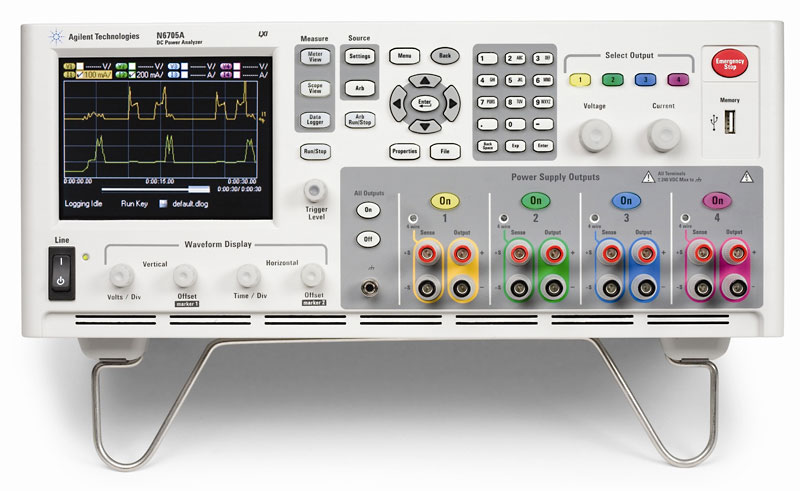SWRA478D February 2015 – January 2019 CC1310 , CC1312PSIP , CC1312R , CC1314R10 , CC1352P , CC1352P7 , CC1352R , CC2640 , CC2640R2F , CC2640R2F-Q1 , CC2642R , CC2642R-Q1 , CC2650 , CC2650MODA , CC2652P , CC2652R , CC2652R7 , CC2652RB , CC2652RSIP
6 Measuring Power Consumption With a DC Power Analyzer
The most accurate way of measuring power consumption is to use a DC Power Analyzer (since the power consumption varies over time, a simple multimeter will not be sufficient). An oscilloscope can be used as well, as long as the sampling rate and bandwidth is good enough. For the purpose of this application report, an Agilent N6705B DC Power Analyzer is used (see Figure 6-1). The internal module is a N6781A, a 2-quadrant source and measure unit for battery drain analysis.
 Figure 6-1 Agilent
N6705B DC Power Analyzer
Figure 6-1 Agilent
N6705B DC Power Analyzer